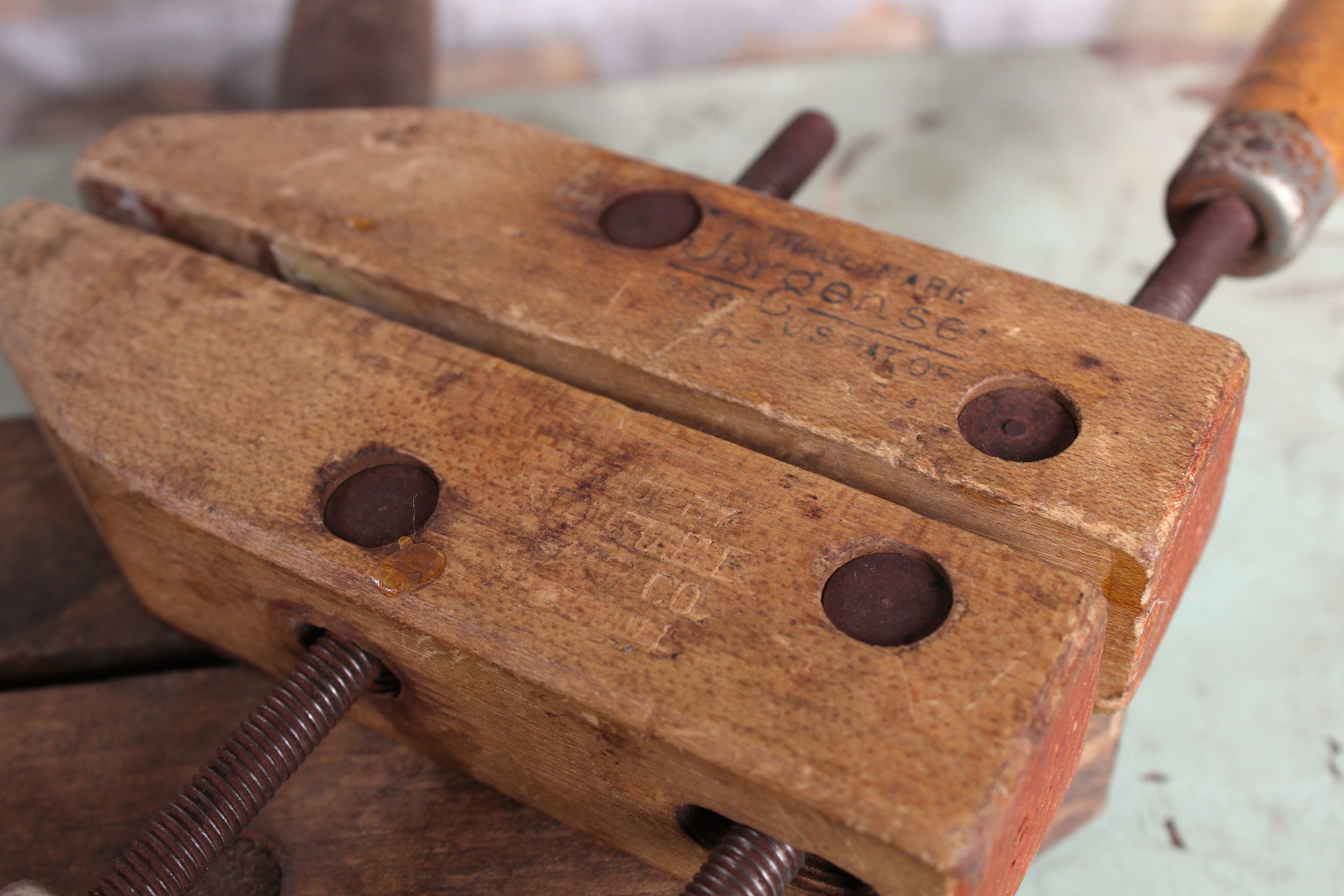
Museum Artifact: Jorgensen Hand Screw Clamps, c. 1950s
Made by: Adjustable Clamp Co., 417 N Ashland Ave., Chicago, IL [West Town]
Back in 2015, when the Made In Chicago Museum was in its developmental stages, the Adjustable Clamp Company stood out as the rare “feel good” story amidst a sea of shuttered factories, outmoded merchandise, and forgotten dreams. The respected tool manufacturer, which changed its name to Pony Tools in 2013 (adopting the title of one of its’ long-running brands), was an honest-to-gosh family business with a local history dating back more than a century.
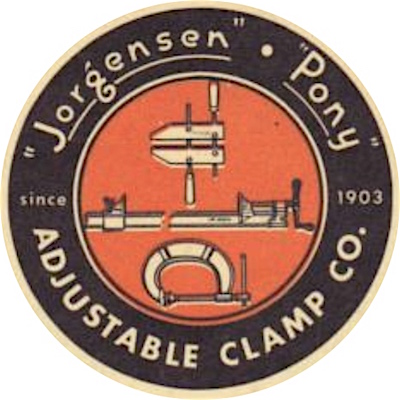 The company’s chairman, Doug Holman, was actually the great-great grandson of the original founder, Adele V. Holman—a trailblazing woman who presided over a thriving manufacturing business nearly two decades before she had the right to vote. What a story! Maybe there is still hope for the underdog after all . . .
The company’s chairman, Doug Holman, was actually the great-great grandson of the original founder, Adele V. Holman—a trailblazing woman who presided over a thriving manufacturing business nearly two decades before she had the right to vote. What a story! Maybe there is still hope for the underdog after all . . .
“I am writing to inform you that on May 19, 2016, Adjustable Clamp Company d/b/a Pony Tools Inc. informed its Chicago employees that it was suspending operations in Chicago effective immediately.”
Those are the words of Doug Holman, announcing via e-mail that his great-great grandma’s 113 year-old company was suddenly kaput. He elaborated that “this step was necessary due to issues unique to the Chicago business”—if you consider that elaborating.
To be fair, any small company that lasts this long—through depressions and recessions, world wars, and marketplace shifts—ought to be commended rather than criticized when it reaches the end. There was even some hope among devotees that the business might yet be saved at the 11th hour. After a two-year dormancy, however, the actual revival of the Pony and Jorgensen brands in 2018 proved a tad bittersweet. The new products will be distributed by Arrow Fastener in New Jersey, but they’ll be manufactured entirely by Arrow’s parent company, China’s Hangzhou GreatStar Industrial Co. A once inspiring story of survival is now just another tombstone in the “Made in Chicago” graveyard.
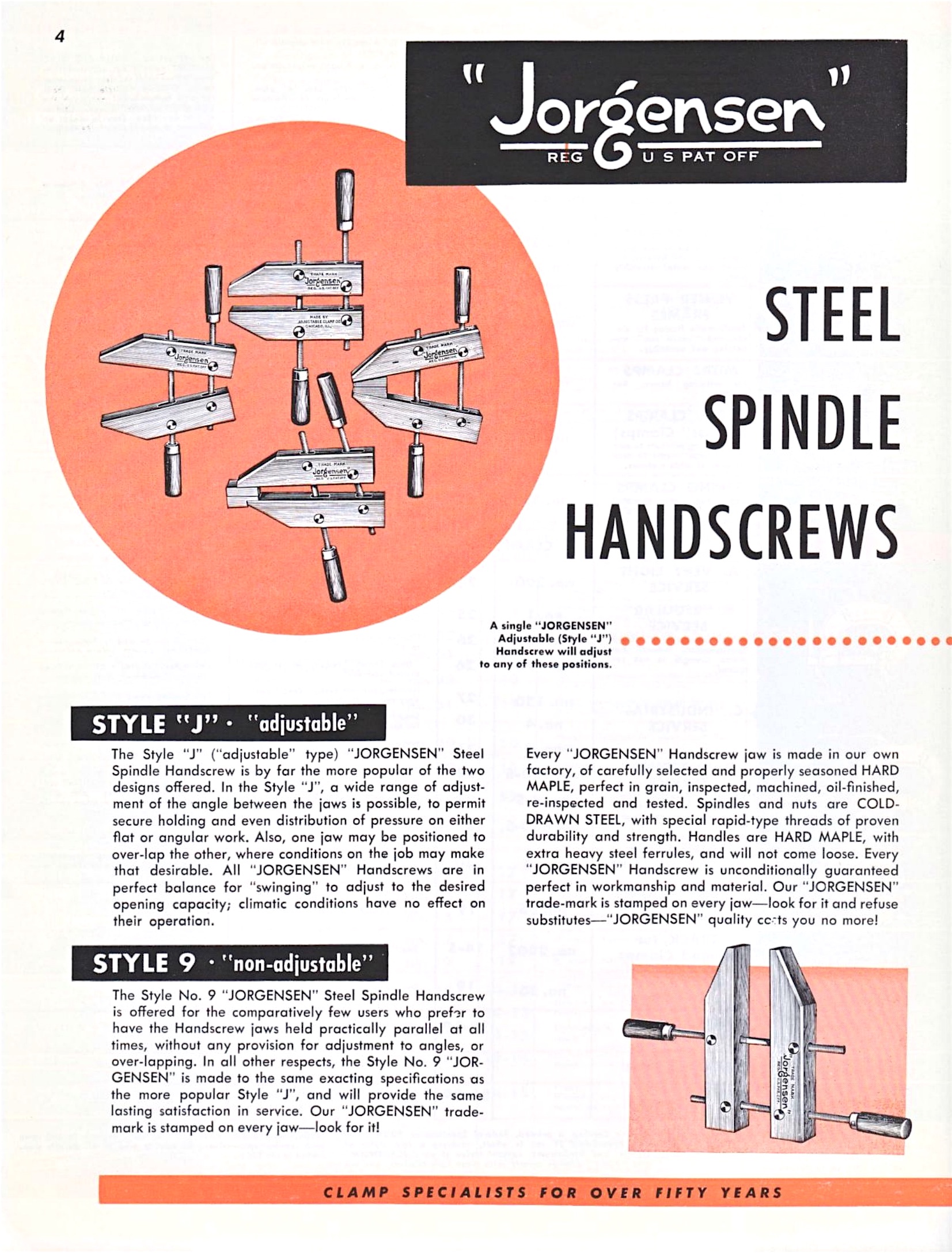 [Page from the 1954 Adjustable Clamp Co. catalog]
[Page from the 1954 Adjustable Clamp Co. catalog]
Adjustable Clamp Co. History, Part I: The Goods
The end of Pony Tools [in its original form, at least] also means the end to any and all outstanding warranties on their products, I reckon. Since the factory had already started using cheaper Chinese components towards the end, that could prove problematic for some people. If you’re the owner of any old-school, Chicago-made ACC tools, however—such as the classic “Jorgensen” brand handscrews in our collection—you can rest assured that they’ve probably got another few decades of functionality still left in them.
“Our JORGENSEN Handscrews are, in our opinion, the finest general purpose clamping tool,” the company claimed in its 1956 catalog. “Properly handled, they are easily and rapidly adjusted, quickly applied to and removed from the job. They provide greatest leverage on the work for the effort expanded. The highly selected, straight grain, hard maple jaws present a broad surface to the work being clamped, without any tendency to ‘creep’ or twist. Also, the wood jaws hold most securely, without slipping, against any kind of surface—wood, metal, fabric or plastic—without danger of marring the work. With only ordinary care, they will outlast the ‘iron’ clamps which are often substituted . . . Not all Handscrews are the Genuine ‘JORGENSEN’—be sure to look for the ‘JORGENSEN’ Trade-mark on the jaws of the Handscrews you buy!”
That synopsis, poorly written as it might be, could just as easily have come from the 2015 Adjustable Clamp catalog, or the 1915 edition, for that matter. Sure, an expert might recognize subtle changes to the Jorgensen design over the decades, but for the most part, if you bought one of these things brand new from a hardware store a few years ago, it probably looks and functions almost identically to the ones in our collection (which are likely mid-century) or the ones Adele “Someone Like You” Holman was rolling off the assembly line a century ago.
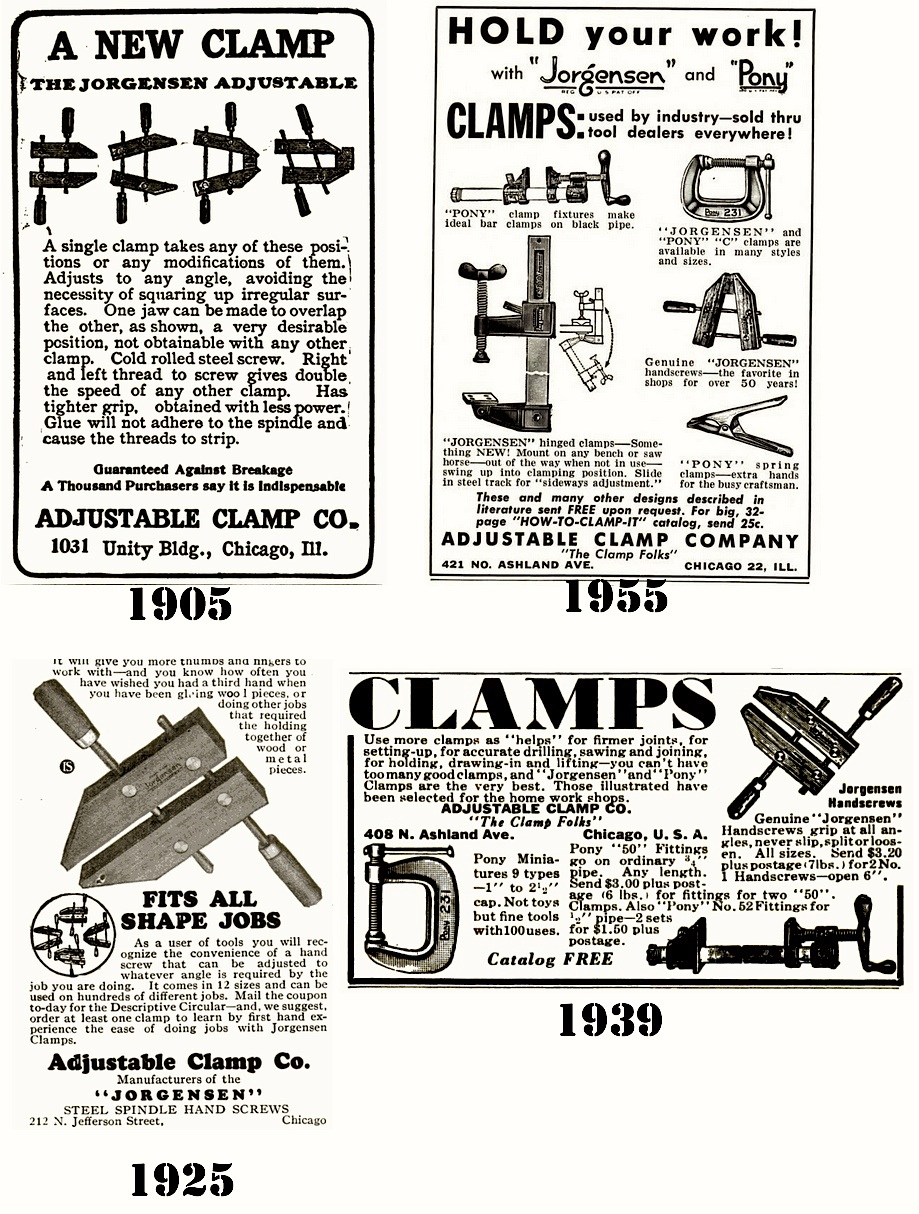
Some of the other early Adjustable Clamp Co. creations—like the metal Pony and Jorgensen “C” Clamps (patented by Adele’s son Harry V. Holman) were also left mostly unaltered after their 1920s/30s introductions. In the ‘50s and ‘60s, third-generation owner D.V. Holman helped usher in another line of successful clamps, and his son, Daniel, expanded to bench vises and miter saws under the same Pony, Jorgensen, and Adjustable brand names. The arsenal was established, and only the world around the Holmans was ever gonna change.
That’s the tough thing about making a quality product for 100 years. If the design has been perfected, and the tool itself lasts a very long time, it becomes increasingly difficult to keep selling new ones—even to happy customers. Now, there are certainly more complex explanations for Adjustable Clamp’s eventual demise. Some have suggested that there were serious managerial rifts over recent decisions—including moving much of the parts manufacturing to China. Others blamed union demands, cheaper competition, or failing to keep up with new tech trends. But it seems friendlier to just say “they were too good for their own good”—whatever consolation that might be to the workers now out of a job.
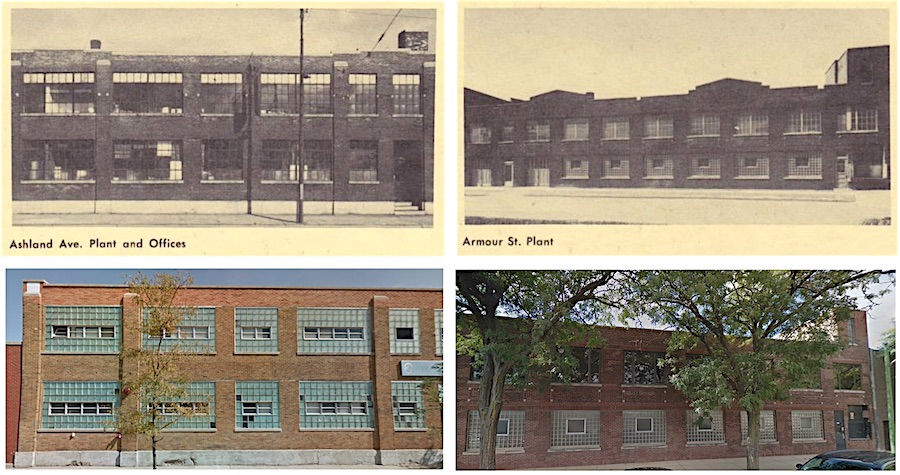
[Then & Now: Images of Adjustable Clamp’s former main plant at 417 N. Ashland Ave. (left) in 1954 and 2018, and its second plant nearby at 404 N. Armour Street (right), 1954 vs. 2018. The company employed just over 40 workers back in 1954]
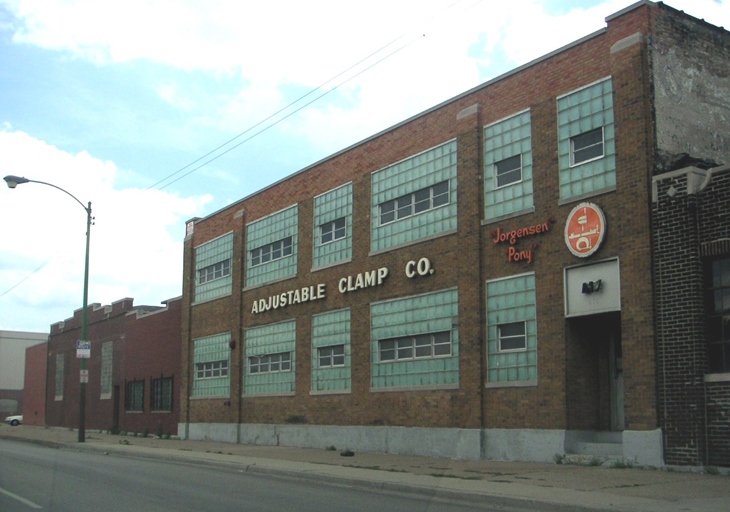 [Another look at the longtime Adjustable Clamp factory at 417-433 N. Ashland Avenue in West Town, circa 1990s. The factory shut down in 2016.]
[Another look at the longtime Adjustable Clamp factory at 417-433 N. Ashland Avenue in West Town, circa 1990s. The factory shut down in 2016.]
Part II: Finding Adele
Before the sale of the company, the old Pony Tools corporate website only provided a quick glimpse into a fascinating origin story on it’s “About Us” page: “Ms. Adele Holman was the original company owner and business leader,” it said, “remarkable back then for a woman to own, run and grow a company.”
It certainly was! Clearly, I needed more information.
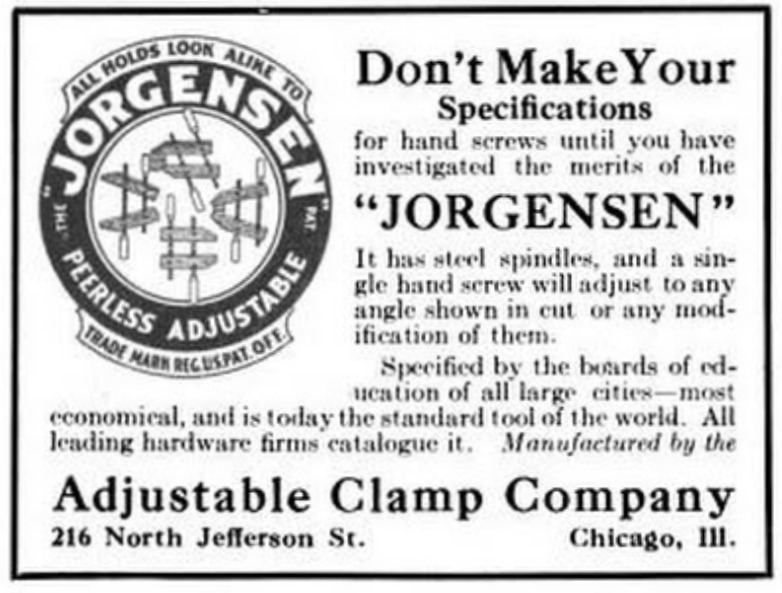 So, since Pony Tools had yet to fold when I started my research, I reached out to them in 2015 with one basic request—I wanted to know more about the Adjustable Clamp Company’s fearless founder. I figured, with the Holman family still in charge and proud of its legacy, there would be plenty of marvelous anecdotes and photos of “Great-Great Grandma Adele” forthcoming, thus crafting an intimate portrait of a great industrial revolutionary—an important Chicagoan long overdue for her proper recognition.
So, since Pony Tools had yet to fold when I started my research, I reached out to them in 2015 with one basic request—I wanted to know more about the Adjustable Clamp Company’s fearless founder. I figured, with the Holman family still in charge and proud of its legacy, there would be plenty of marvelous anecdotes and photos of “Great-Great Grandma Adele” forthcoming, thus crafting an intimate portrait of a great industrial revolutionary—an important Chicagoan long overdue for her proper recognition.
Initially, a sales rep at Pony Tools told me they’d be happy to help. But alas, no information was relayed, and no future queries received a response. I felt that perhaps the Holmans had attached clamps around their own hearts, but in retrospect, the impending collapse of the business may have been a distraction.
In any case, a little digging of my own revealed that the Adjustable Clamp Company’s beginnings actually came a few years before Adele Holman’s involvement, when Hans Jorgensen himself—inventor of our trusty hand screws—got the ball rolling in 1903. Jorgensen had his product and the skill to manufacture it, but he lacked the capital to start a business. This brought him into contact with an opportunistic Chicago lawyer named Marcus W. Russ, who agreed to fund the effort, serving as the first company president and sole salesman. In the early years, the whole operation ran out of one room, with a tiny staff of several workers hand-making each and every clamp. As demand increased, Russ purchased a separate manufacturing facility at 216 North Jefferson Street, with a half dozen employees making a still meager 300 clamps per week. It was around this time, in 1907, that a whirlwind of a woman named Adele Holman walked through Russ’s door. It was literally music to the lawyer’s ears.
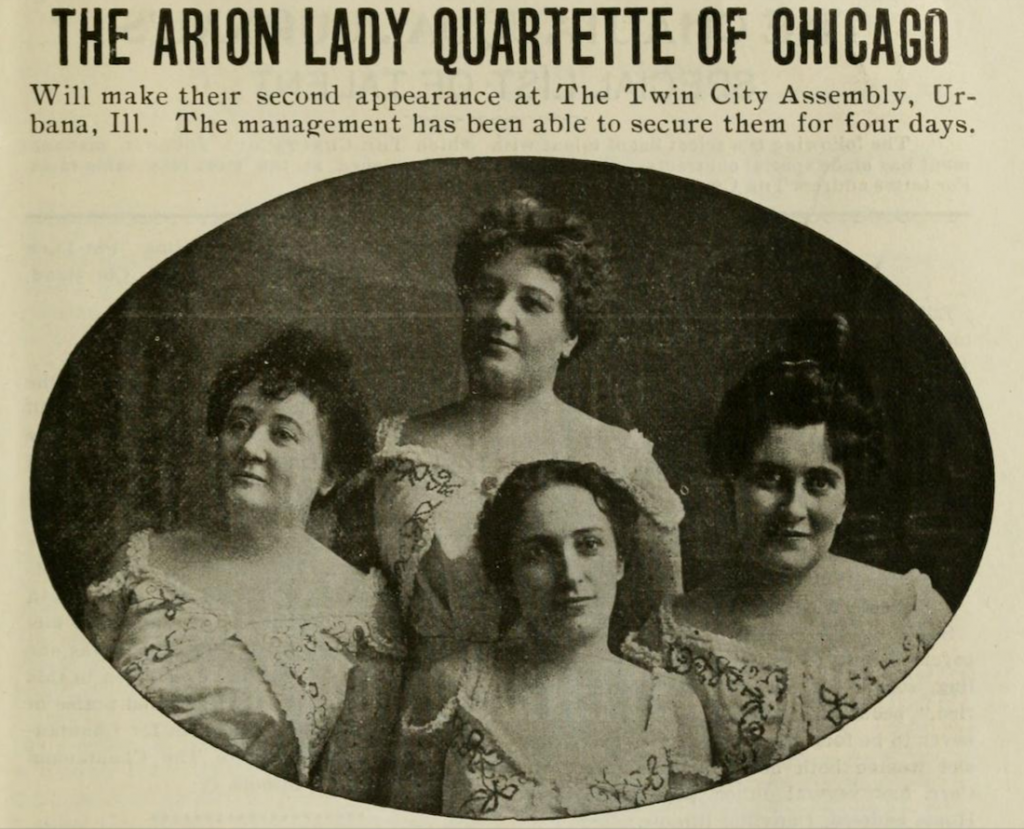 [The Arion Ladies Quartette in 1899: I believe that’s Adele up top.]
[The Arion Ladies Quartette in 1899: I believe that’s Adele up top.]
While this was rarely if ever mentioned in any of the Adjustable Clamp Co’s own corporate histories, Adele Holman was already something of a local celebrity when she bought her first shares in the business. For much of the 1880s and ’90s, the Jerseyville, Illinois native made her career—much like our most famous 21st century “Adele”—as a touring vocalist, eventually becoming the star mezzo-soprano and manager for the very popular Arion Lady Quartet.
The group performed hundreds of shows across the Midwest and beyond, and according to just about any thing you read about them, their harmony-laden renditions of popular standards got them big reactions and regular encores. Whether they were playing high society banquets, monument unveilings, religious concerts, hospital fundraisers, college campuses, or the finest theaters and music halls of the era, the Arion Ladies (rounded out by Ariel Nichols and the Swedish sisters Maria and Amelia Haden) delivered the goods.
In 1893, the group performed at Chicago’s Central Music Hall with the famed African American opera singer Sissieretta Jones. Two years later, the Cincinnati Commercial Gazette wrote that: “the Arion Lady Quartette of Chicago did some of the most exquisite concerted singing we have ever heard. The liquid quality of the tone emitted, the absolute accuracy of time, the graduations of the shading which gave lifelike truth to the sentiment, the clear enunciation of words, all made its singing a delight.” Wow.
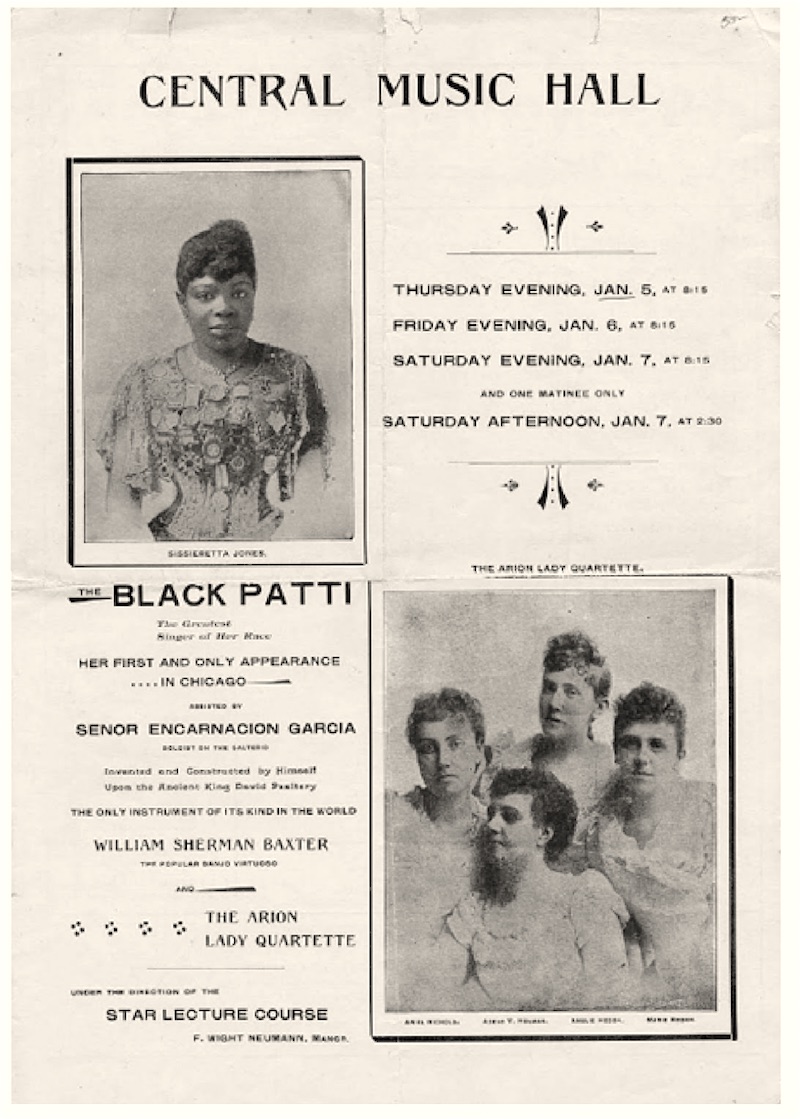 [Poster for Adele & the Arion Lady Quartette, supporting Sissieretta Jones in Chicago, 1893]
[Poster for Adele & the Arion Lady Quartette, supporting Sissieretta Jones in Chicago, 1893]
As the 20th century dawned, Adele was still listed in the Chicago City Directory as a “Vocalist,” and she had a “wide and enviable reputation as a musician of remarkable talent and most gracious personality.”
Circumstances began to change in 1905, however, when her husband Harry W. Holman (a railroad clerk she had married at the ripe old age of 15) suddenly died. At the same time, their lone son, Harry V., was off in Colorado working for a gold mining company. Based on the cultural expectations of the time period, Adele should have assumed the role of the middle-aged lonely widow. She could have spent her days sipping tea at Marshall Field’s or comparing hat sizes with other ladies at various meetings of “enthusiast” groups. But that was never her style. Instead, with the fairly substantial funds at her disposal, Adele decided to take the management experience she’d gained booking shows for her “band” and apply it to a new pursuit.
With her initial purchase of Adjustable Clamp Co. shares in 1907, she replaced Walter Caddock as secretary, and while Marcus Russ was technically still the president, Adele Holman immediately took charge.
“Shortly after Mrs. Holman became secretary of the company,” reported the Manufacturing and Wholesale Industries of Chicago, Vol. 3, “she decided that to insure the maximum success of the enterprise, the business office should no longer be segregated from the factory. She accordingly set definitely to work to bring about an orderly and progressive administration of affairs, though she had virtually no previous business experience. She established her executive headquarters at the factory and by her careful and discriminating methods evolved order out of chaotic conditions.”
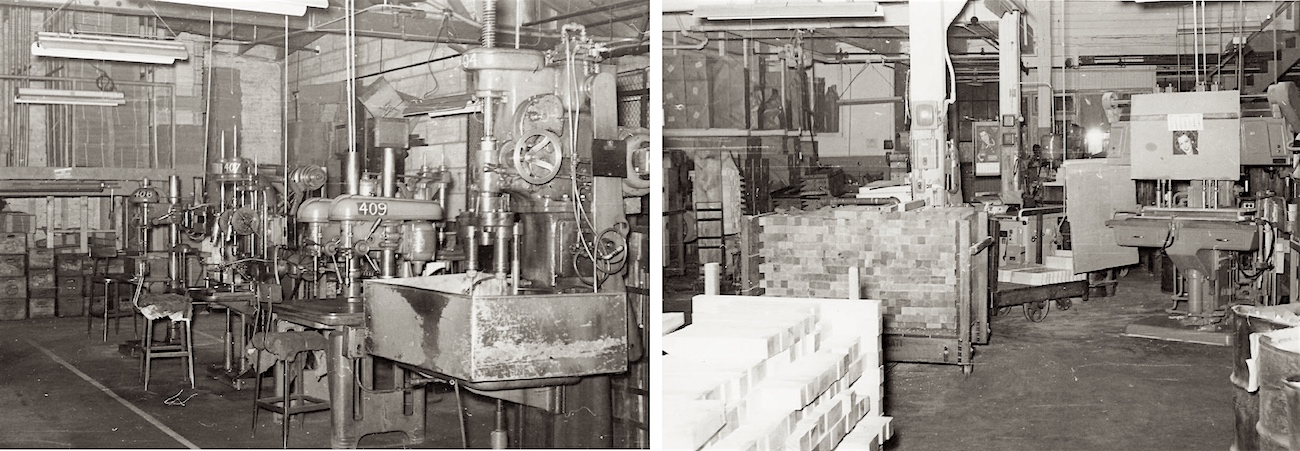 [Inside the Adjustable Clamp factory, circa 1940s. From PonyJorgensen.com]
[Inside the Adjustable Clamp factory, circa 1940s. From PonyJorgensen.com]
By 1914, Adele bought out the rest of Russ’s shares for $18,000, taking full ownership of the Adjustable Clamp Company. Three years later she expanded the factory, with 15 mechanics producing close to 2,000 clamps per week, of new and varying models. Orders were coming in from around the world, and Holman’s name was gaining recognition outside the circles of music.
Manufacturing and Wholesale Industries of Chicago assessed it this way: “Special interest attaches to the [Adjustable Clamp Company] by reason of the fact that its executive head, Mrs. Adele V. Holman, has proved fully the resourcefulness and administrative ability which woman may bring to bear in the broad domain of industrial and commercial enterprise. Mrs. Holman is president of the company and virtually the sole owner of the business which is being most ably and progressively conducted under her personal administration.”
 The praise continued. And remember, this is 1918, still two years before Adele or any other American woman had the right to vote.
The praise continued. And remember, this is 1918, still two years before Adele or any other American woman had the right to vote.
“Under her regime the concern became a substantial, well ordered and growing institution, her policy having been fully justified in tangible results. She is essentially one of the representative women in the industrial activities of Chicago and has achieved success of unequivocal order.”
Adele remained the leader of Adjustable Clamp—the furthest thing from a figurehead—up until her death in 1932. As a rather cruel insult, her gravestone in Jerseyville reads merely, “ADELE V., WIFE OF HARRY W. HOLMAN.” Twenty years as a world class singer, another 30 years building a successful international tool company, and in the end, she was just somebody’s wife. There’s the gender gap for you—ever so slowly improving thanks to the exploits of gals like Adele Holman.
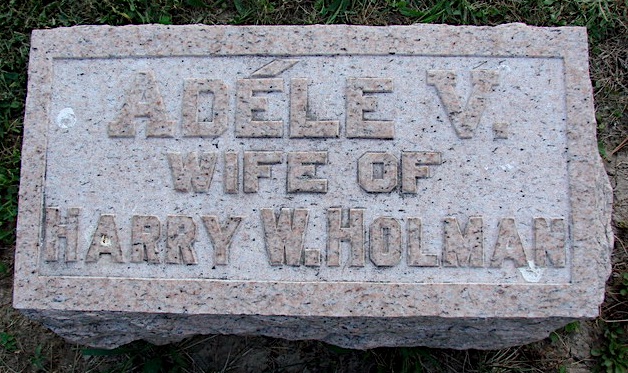
So what inspired a talented singer to give up clefs for clamps? Did she find a rhythm and harmony within the utilitarian tools of her new trade? Would she sometimes walk the factory floors, cooing a melody to inspire her workers?
I don’t have these answers presently. But next time you’re using a Jorgensen clamp or a Pony tool of any kind, think about Adele and her friends singing ‘Way Down Upon the Suwannee River,” and realize there is an artist’s sensibility even in the most mundane of factory-made products.
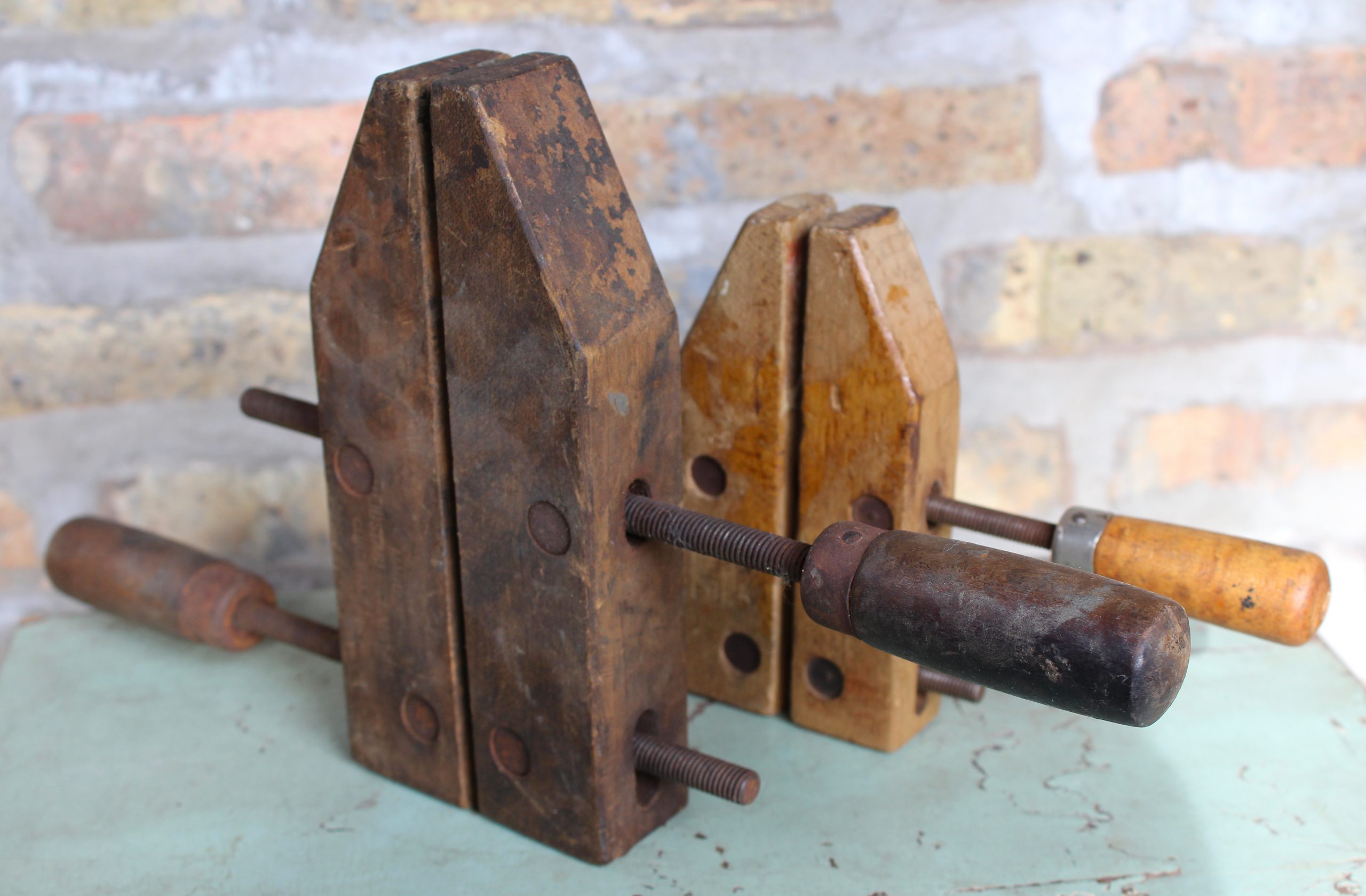
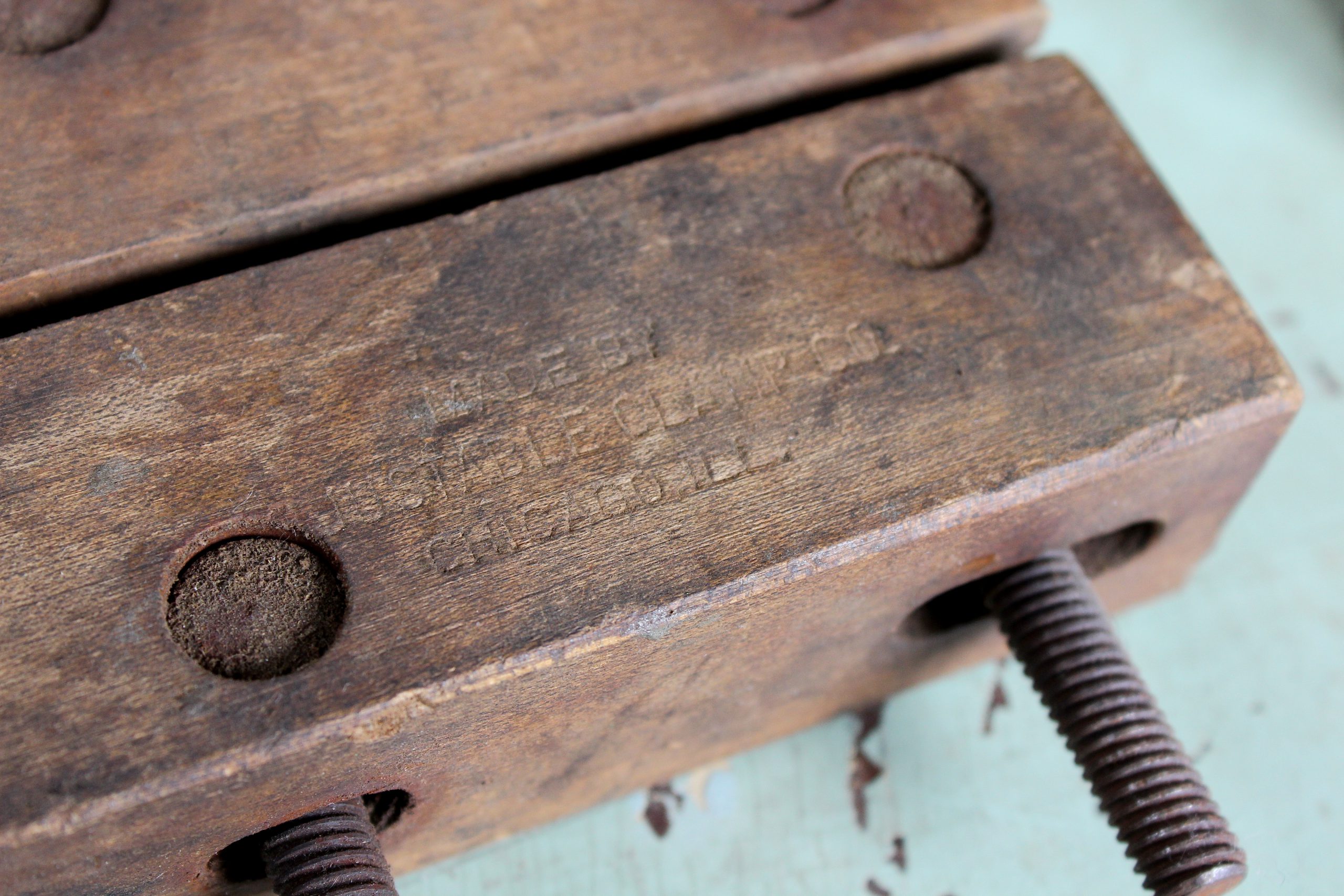
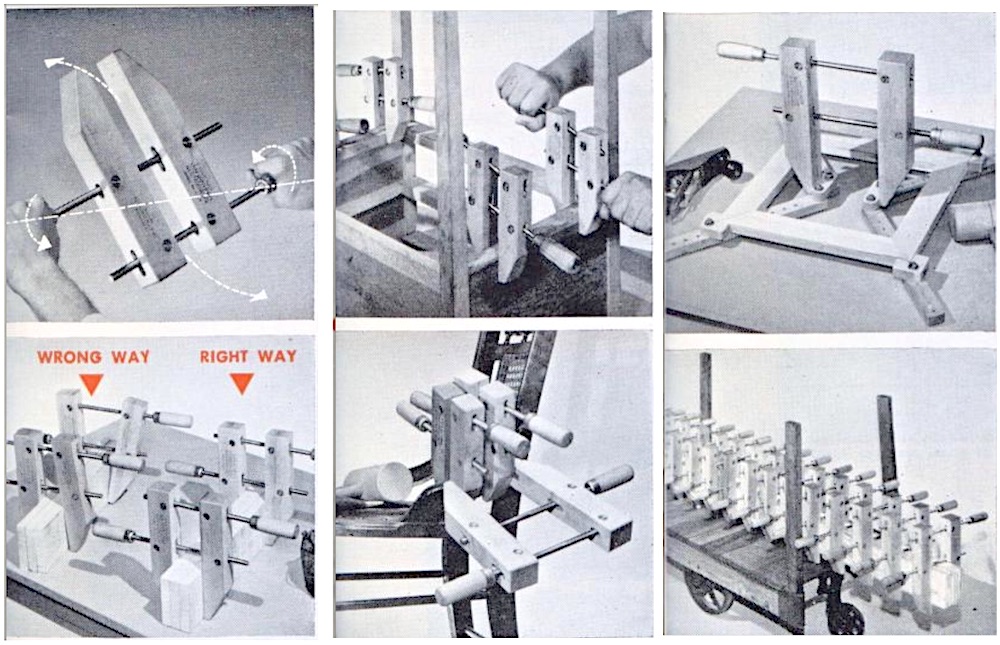
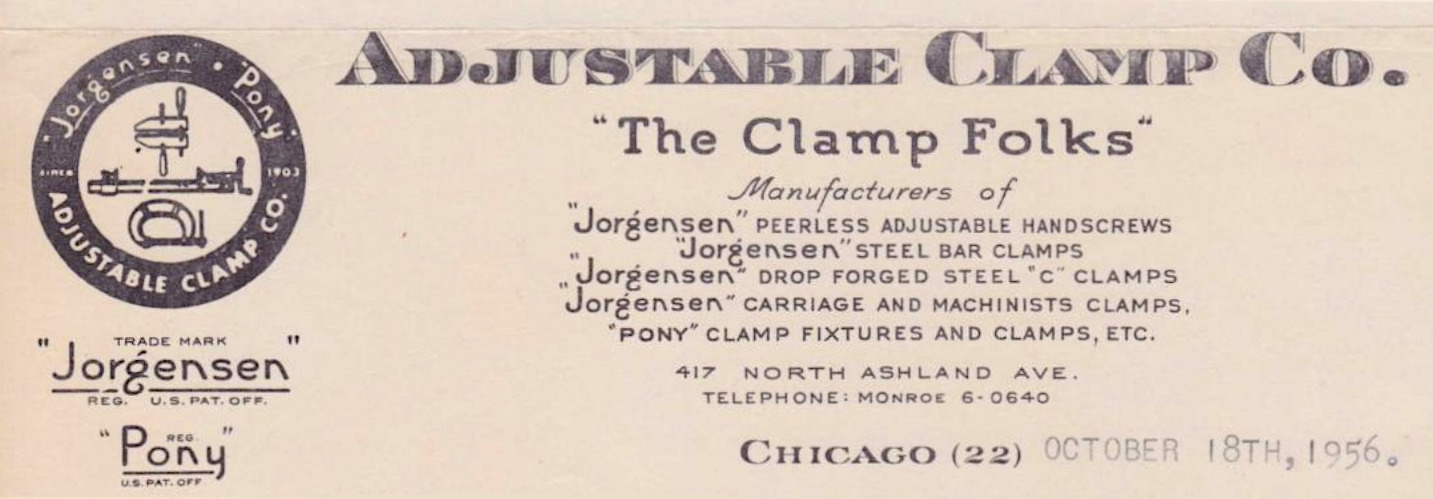
Sources:
Adjustable Clamp Co. Catalog #19, 1954
Adjustable Clamp Co. Catalog, 1956
“Adjustable Clamp Company” – Manufacturing and Wholesale Industries of Chicago, Vol. 3, 1918
PonyJorgensen.com (New Corporate Website est. 2018)
Chautauqua Journal, Urbana, IL, April 1900
“Iconic American Tool Brands Pony, Jorgensen & Goldblatt To Be Relaunched to the North American Market Under the Leadership of Arrow Fastener” – Press Release, May 10, 2018
Archived Reader Comments:
“The Adjustable Clamp Company also manufactured locking pliers (and perhaps C-Clamps) for Sears Craftsman. This is easily determined by reversing the patent numbers found on the Craftsman tools and finding out that the patent applicant was The Adjustable Clamp Company. Great products.” —Joe, 2019
“I became curious about the Adjustable Clamp Company after using my “Pony” band clamp a lot this week after sitting in various tool chests for the past 30 years. Made in USA, the box said in a style, color scheme, and lettering that looked like it hadn’t been changed since 1954. My gosh this stuff was honestly made.” —Jon F., 2019
“VERY nice piece about both the fascinating Adele and her work ethic, “don’t hold me back, I have work to do!” —EdSki, 2019
“Interesting article with interesting images of vintage documents etc. It’s a shame the company apparently couldn’t remain viable another 100 years, but we live in a “if it ain’t broke, it will be soon,” disposable society now. Shame. I’m glad to have 40-50 of their handscrews, I-beam clamps, pipe clamps, & one parallel clamp in my wood shop.” —Harry M., 2019
“Great story. Just bought 2 sets of varying sizes of these clamps at a local thrift store and they are in near-new condition somebody obviously liked them very much glad to have bought them and I am Chicago native myself from Oak Lawn.” —Howard Corbett, 2018
“Very interesting article. I ran across it while looking for info on clamps “TRADE MARK Jorgensen/ REG. US PAT. IFFICE/MADE IN USA………MADE BY ADJUSTABLE CLAMP CO./ CHICAGO, ILL.” —Jackie Harrod, 2018
“I went to Lane Tech high school about 4 miles north of the Ashland Ave. address. We used Jorgensen handscrews in our wood shop classes. This was in the 1950’s. Since then I’ve always had a shop of some kind in my garage, and there were always Jorgensen clamps in it. I am fascinated by the history of these people who built great manufacturing empires, and I’m sorry to see the Adjustable company in decline. Does anyone know anything about Hans Jorgensen? Birth? Death? Country of origin? This morning I was at a swap meet and I picked up a small bar clamp made by adjustable.” —Bob, 2017
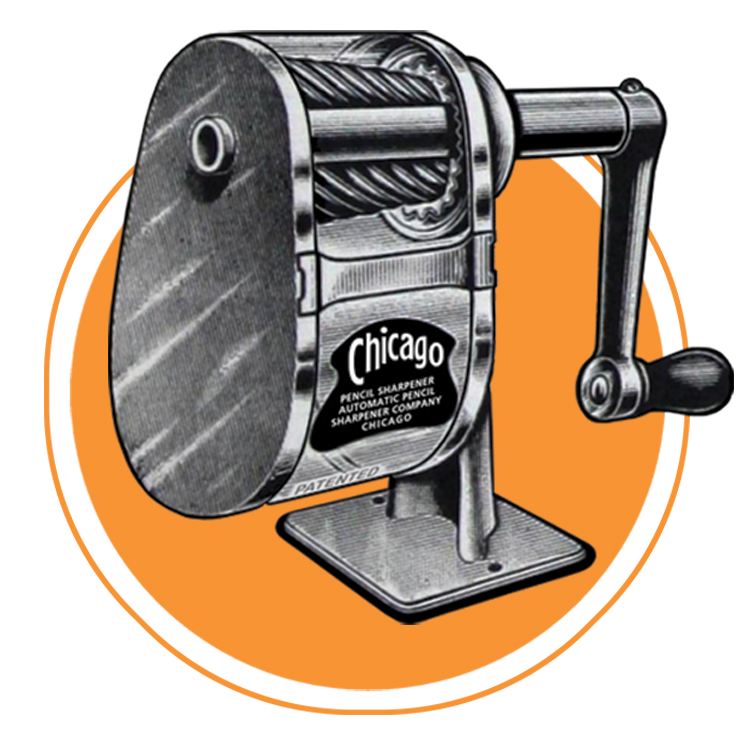
Amazing story. I have a large hand screw clamp, #108. It has a 8 inch bite. Bought it at a second hand shop. Use it mainly to push the break pad pistons back while I swap in new break pads. It just says “MARK” at middle above the company name. So I tell people “Mark” helps me in the garage! Well made, and I will hold it differently next time it gets used.
I have a pair of jorgensen wood hand clamps I want to know the value
How do I tell the manufacture date of my Jorgensen adjustable clamp
I have a number of old hand screw clamps. Curious to find out what year they were made. Can’t upload photos to this but, could send someone a pic on messenger?
To Gary Marotta’s post of Dec 23, 2022.
I found Qty 2, No. 1623-BA, Bolt and Nut Assembly, in original paper bags in my Dad’s woodworking material.
Since I don’t have the clamps they belong to, I’d be happy to send them your way if you still need them.
I have Jorgensen hold-down clamp 3″ cap. I need bolt no. 1623-BA bolt and nut assembly do you know where to get them thank you
I am writing with an odd question about old / vintage C-clamps which I believe were manufactured by the former Adjustable Clamp Co. of Chicago, IL.
But first, please allow me to offer my appreciation, my sincere thanks, for creating and maintaining such a fantastic website, which includes this superb webpage about Adjustable Clamp Co. It is beyond excellent in presentation and information. You and your staff deserve commendation. I can only offer a modest one. It is yours.
I have recently come across a pair of old, 1-inch c-clamps. They are both marked at the top of the C shape with the letters “CHCO”. Along the middle is the word “Adjustable”.
Clearly, any information you may be able to provide would be most appreciated. I am primarily interested in determining the manufacturer, which I suspect is either the Adjustable Clamp Co. or Chicago Tools.
Please and again, accept my thanks and appreciation, also for any reply you may be able to provide . . . . gratefully yours, bill bondurant / Paducah, KY
I am confused. The internet is full of pictures and companys wanting to sell the adjustable 4 ” 1440 clamp and this article says the company is out of business. Can you clarify that for me.
Thanks, In Christ,
tom
Hi Tom. As noted in the article, the company folded, but the Pony and Jorgensen brand names were purchased by a different business in 2018. The new versions of these products are made in China. –Made in Chicago Museum
I have one of these clamps u.s. pat. OFF
ALSO #2 ON BOTH OF THE END PEICES
I worked at eastern co., alloy foundries div.,
naugatuck, ct as a metalurgical/ process engineer
from1978 to 1982 recession..Automatic molding machines would put out a mold of 8 to 12 8inch
adjustable clamp bodies every 40 seconds. They were poured in pearlitic malleable iron.After heat treat they were 2nd to none, & still are.
I have a MARK Adjustable Clamp Co. Of Chicago ILL. Clamp #803. I’m having no luck finding out the approximate manufacturing date on this particular clamp. Also, what is it worth?
would like to know how to instructions on the PONY 1 inch x 15 ft.
nylon band clamp.
I have two Jorgenson Hand screw clamps on which the number 910 is stamped on the end of the jaws. The holes in the jaws through which the screws are round, not oval as they are/were on the most recent production of the clamps that were made in Chicago. These clamps are the same size as the Large Number 2 clamps. These newest to my collection only need some tender loving care to clean them but are very serviceable as I have already used them.
John Hodson
Very interesting read ! Also interesting as I am a Holman !! I have a set of 4 clamps I can’t find any info on. If possible could I send a picture with the number and style number. Thanks Kathy
I totally enjoyed reading the history. For many years I passed the Ashland Ave factory. Through recent years my company purchased Metal Clamps directly from the company. Then one day they were gone. Thanks to the writer of the history.
Roger Gamble
To John Scott Did you ever get an answer to your question? I have two clamps marked on the outer edges instead of the jaw faces.
One clearly reads:
THE
“JORGENSEN”
PATENT
MADE BY
ADJUSTABLE
CLAMP CO
Chicago, U.S.A. (Where the Jorgensen and Chicago lines are curved.)
The trademark on the other clamp is lightly inscribed and hard to read, but I think it starts with The Adjustable Clamp Co. followed by
That is followed by:
JORGENSEN PAT
—- CLAMP —-
PAT’D DEC. 3 1901
CHICAGO. ILL. (Also curved)
Do these match your examples? I can’t find any mention of these marks on the Internet. Presumably the first one is pre-1925 and the one that lists the patent date much earlier, as the company was not incorporated until 1903. Thanks.
I have a number of Jorgenson handscrew clamps in my shop. Everyone of these clamps I have ever seen has the Jorgenson name stamped on the side of the jaws. I recently acquired a few handscrews clamps at a local flea market. They were very dirty so I took a rag an wiped down the jaws. It was then that I noticed they were actually Jorgenson clamps but the name was stamped on the edge of the jaws not the side. The 1925 catalog image above still shows the name stamped on the side so I’m assuming these clamps pre-date 1925. Is there any information on when the company started branding the clamp jaws on the side?